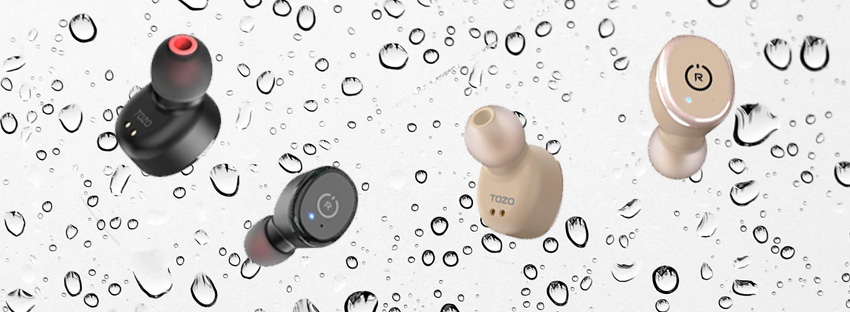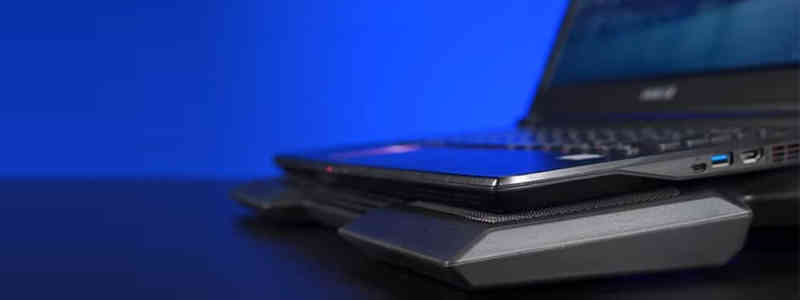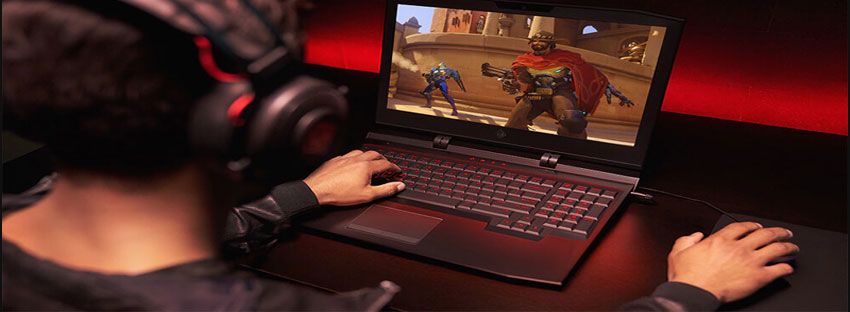Traveling around the world presents us with beautiful moments that we want to cherish for the rest of our lives and what better way to preserve those moments than to lock them in a picture or video. Smartphones in 2025 are as good as some of the digital cameras out there, some might argue. However this not quite the case as in 2025 some of the best manufacturers around the world have made compact cameras that put even the best DSLRs to shame, let alone smartphones.
The qualities of the best travel cameras are that it must most importantly be compact, lightweight and pocketable as you do not want to carry extra burden on your shoulders to enjoy the moment. Next equally important factor to be considered is the quality which should be way better than our average smartphone to make an extra camera carrying worthwhile. For demanding travelers the camera should be built robust and lastly, value is also very important as you do not want to spend too much on a camera that performs too little for its price.
Hence we decided to compare the best cameras for travel that you can buy in 2025. These cameras have proven their mark in field testing by thousands of travelers giving positive feedback. Our first three competitors are the titans of the competition. These cameras are not only compact and light, but they give superb quality images. Then we have a couple of mirrorless cameras that have been dominating the market since the past few years, performing like DSLRs in much smaller form factors. We have also included a tough camera which seems that it can survive a nuclear bombing and a superzoom for people who love nature photography.
Disclosure: This post contains affiliate links. When you purchase a service or a product through the links, I sometime earn a commission, at no additional cost to you. Read my full disclosure here.
Best Cameras for Travel Photography 2025
| Camera Name | Type | Sensor Size | Megapixels | Amazon Prices |
| Panasonic LX10 | Point and Shoot | 1″ | 20.1 | View Deal |
| Sony RX-100 V | Point and Shoot | 1″ | 20.1 | View Deal |
| Canon G7x MkII | Point and Shoot | 1″ | 20.2 | View Deal |
| Sony a6000 | Mirrorless Camera | APS-C | 24.3 | View Deal |
| Olympus Tough T4 | Point and Shoot | 1/2.3″ | 16 | View Deal |
| Canon Powershot G9x MkII | Point and Shoot | 1″ | 20.2 | View Deal |
| Nikon 1J5 | Mirrorless Camera | 1″ | 20.8 | View Deal |
| Canon Rebel SL1 | Digital SLR | APS-C | 18 | View Deal |
| Nikon Coolpix L840 | Superzooms | 1/2.3″ | 16 | View Deal |
| Sony W830 | Point and Shoot | 1/2.3″ | 20.1 | View Deal |
1. Panasonic Lumix DMC-LX10 – The best all-rounder
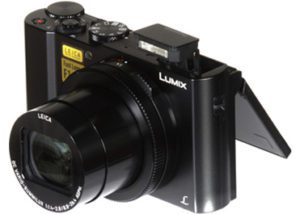
Quick view on Amazon
Available in: Australia, Canada, UK and US
Panasonic has been making quite a statement in the camera market since the past few years. Their offerings such as the GH4 have taken the DSLR videography to a whole new level. With the LX-10, they aim to prove that they aren’t kidding around. A compact camera that can easily fit any pocket and gives superior images, impressive low light performance and the freedom that professional photographers necessitate.
With a 1 inch sensor Panasonic has decided to include an f1.4 lens instead of an f1.8 offered by the competition. For those who don’t know, that is a huge step up. A wider opening in the lens equates to superior low light performance so you can expect the LX10 to outperform any camera in this segment for capturing those tricky night shots relatively noise and blur free. In addition to that it also allows for a greater depth of field effect for those professional, crisp blurred background images that add an extra tinge to your portraits.
The choice of user interface is also quite remarkable. While giving the controls such as setting the aperture, iso, shutter speed and white balance at the fingertips of those who just won’t settle for less, they have made the user interface very friendly for those who just want a hassle free experience at the push of a button. The professionals will be delighted with the aperture ring and a knob for manual settings, while the average consumer will most certainly find the 180° rotating 3-inch touchscreen LCD intuitive.
On the video side of things the LX10 doesn’t fail to impress. The superior autofocus coupled with crisp 4K recording mode can produce stunning video. The top of the line 5-axis hybrid stabilization ensures the video is smooth and the colors are surprisingly good for the size of the sensor, making this is undoubtedly the choice of many professional videographers who want a compact camera for traveling.
However, the most remarkable quality of this camera is its price. It is a testimony that for under $700 you can get a device that can outperform many DSLRs and fit in your pocket at the same time. In fact the reason why we voted this to be the best travel camera of 2025 is the fact that it offers the best value in addition to all its features which is commendable.
Perhaps the best way for us to describe the LX-10 would be that it is the Swiss knife of modern point and shoot cameras. It is a point where versatility meets value and a sweet spot between ease of use and professional customizability.
2. Sony RX-100 V – The king of travel cameras
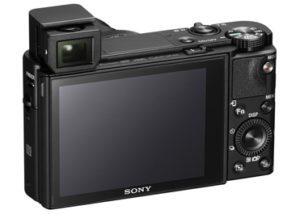
Quick view on Amazon
Available in: Australia, Canada, UK and US
There is no argument here, when it comes to making digital cameras – Sony is the king of the ranch. In fact Sony can be credited for starting the digital camera revolution more than 10 years ago which revolutionized the camera industry and accelerated the innovation and sales of cameras. Same can be said for RX-100.
Back when the original RX-100 was released in 2012, it was a revolutionary idea and start of a new era in travel cameras. TIME magazine went as far as naming it one of the ‘Best inventions of 2012’. The popular YouTube reviewer Marques Brownlee has named it the best pocket camera ever made. Four revisions later the RX-100 V comes with the best in class blazing fast autofocus thanks to its 315 point Autofocus that Sony claims can focus in 0.05 seconds and true 4K recording.
The camera has amazing capabilities. It can shoot 20.1 megapixels images at continuous 24fps burst. For your reference 4K is equivalent to almost 8 megapixels. Of course, you cannot watch a 20.1 megapixels movie unless there is a screen that sharp to actually support it but for professionals it makes a huge difference as they have so much more control.
Sony didn’t cut any corners in build quality too, as the RX-100 V features a full metal body design which is built really rigidly coupled with an electric viewfinder and a pop-up flash. Its footprint is even slightly smaller than the Panasonic LX-10. You can transfer your images directly to your smartphone also thanks to its support for NFC and Wi-Fi.
Images look sharp, colors are accurate and noise is almost nonexistent. 4K video is also very crisp and Sony claims that it is much better than what most of the other cameras record as it can pack more pixels in. Due to its great video recording it has been widely appreciated as ‘the best vlogging camera for YouTube’ by many.
In low light however like most digital cameras the Sony RX-100 V seems to lag a little behind the Panasonic DMC-LX10. Don’t get me wrong – the images still look great but the sensor size limits the amount of light it can get in. To counter that Panasonic opted for an f1.4 lens compared to the f1.8 on Sony which means Panasonic LX-10 can let more light inside (a lower aperture is better) theoretically allowing for better low light performance as the processor will not have to compensate more for the light. Of course, in reality the difference in both cameras was minimal.
Most of you might be wondering why this isn’t our best choice then? The answer is simply the price. At the time of writing this the RX-100 V costs around $999. We aren’t complaining because to be honest this camera does have superb results.
Although it has a slightly better autofocus system than its rivals i.e. The Panasonic LX10 and the Canon G9x MkII, some might argue that a more than $300 bump in price isn’t justified for the amount of improvements we get. If we compare the actual pictures quality between these three, the quality difference isn’t noticeable.
The RX-100 V is all about the elite class of Point and Shoot cameras. For people who want the best unquestionably – the RX-100 V is the best choice. But for those who want a better price to performance ratio, we would prefer them to look elsewhere.
3. Canon Powershot G7X Mark II – A safe bet
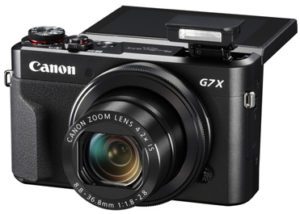
Quick view on Amazon
Available in: Australia, Canada, UK and US
Although it was late in the game but Canon was able to produce a camera that could finally give a hard time to the long standing champion; the RX-100. The result was the release of the original G7X back in 2014. However, despite looking promising on the spec sheet the camera was a disappointment compared to its competition mainly because the optics were not as good and the battery life suffered. With the G7X Mark II Canon aims to fix these problems.
It is rumored (but not confirmed) that the sensor inside this camera is the same as RX-100. For many this might mean that the uncompromised quality from a high end point and shoot can be obtained at a much lower sub-$700 price range but all much as we want it to this isn’t the case.
The body of Canon G7X Mark II is wrapped in a rubberized grip which makes holding this camera for long hours a pleasure. The front ring above the lens is able to manually set a variety of setting and exclusively it gives users the choice between smooth or stepped rotation – not necessarily a performance bump but more of a useful gimmick.
We cannot complain about the quality of images this device produces. The color reproduction is great, the images look very sharp and vibrant and the dynamic range is good. But where this device really shines is the low light performance.
The low light shots look great. The noise is almost nonexistent on low iso and barely noticeable at 1600. The shutter, although much slower than the Sony RX-100, is very fast and can catch great low light or even sport shots.
This camera comes equipped with the Canon’s latest DIGIC-7 processor. This means that iso performance has been significantly improved to reduce noise and shooting performance has been bumped up to 8 frames per second. Canon also claims that autofocus has significantly improved and sure enough – the camera has little difficulty in not only focusing but also keeping track of the subject.
The only problem we have is with the video quality maxing out at 1080p 60fps. All other cameras in this segment are offering 4K and this sets this camera on a big disadvantage over the rest of the crowd. The recording quality is substantially good but having the future proofing of a 4K option would definitely help.
The G7X Mark II is marginally improved over its predecessor and Canon’s second but more successful shot at the high end compact point and shoot cameras. This camera is the best feeling in this segment but falls short on other things from its competitors. Nonetheless, it is a very capable device and worthy of buying for traveling.
4. Sony alpha a6000 with kit lens – Best Performance
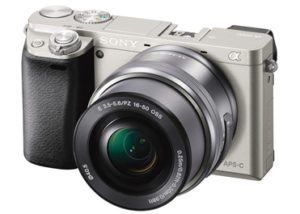
Quick view on Amazon
Available in: Australia, Canada, UK and US
Does size matter? Well according to Sony it doesn’t. Just when we thought that Sony was losing the game in high end optics and cameras to Canon and Nikon, they presented their mirrorless cameras. These had the same sensor size as full sized DSLRs but in a much smaller body and price at the expense of an optical viewfinder. For most of the users it was a very small price to pay as electrical viewfinders replaced them.
The alpha a6000 is Sony’s midrange mirrorless camera with a full blown APS-C sensor. For those who don’t know this is the same sensor size as most of the other midrange DSLRs but if you compare the size of an alpha a6000 to a DSLR offering the same performance say a Canon Eos 70D, it is marginally smaller not to mention cheaper and easier to carry.
So who is this camera for? For those who won’t settle for any less. In fact, this is the best performing camera of all others in the list we are reviewing. The sensor is big enough to handle any tricky situation next to a full frame sensor and it supports interchangeable lenses. That being said quality doesn’t come without sacrifices. This camera is a lot bigger than any of our top contenders and fitting it in a pocket can be a bit tricky, if not impossible due to the hump of an interchangeable lens.
The camera is attractively priced and one of the most selling among the $500-$600 range. Many beginners in addition to travelers are starting their careers with this one. The most distinguishing feature on this one is the autofocus. Just like the RX-100 V, the Sony Alpha a6000 is extremely good at autofocus. In fact, at the time of its release in 2014 Sony claimed that it is ‘the fastest autofocus in any camera’ suggesting its autofocus only takes as low as 0.06 seconds.
There is not much to say about the Sony alpha a6000 except that it delivers on every front. It has it all – a small body, a large sensor, customizability, great quality, excellent autofocus and very affordable price. Although the places where we would like to deduct a few marks would be the build quality and compactness. If you are running around with the kit lens then you might be able to slide it in a big pocket but custom lenses are less likely to oblige by the strictly compact size we are talking about here. Then there is the build quality which is sub-par, mainly because the camera is primarily constructed of plastic. Again, we cannot blame Sony because honestly they had to cut the price and we respect their choice. Finally, we would have loved to see a 4K recording option in the camera as it is the new standard and most cameras in this price point are already equipped with it.
If you can forego the fact that it is made out of plastic and spare some space in your pocket, the Sony alpha a6000 is our most recommended camera for travel. Mainly because it produces great quality images and that is all that matters to some people. However you might look elsewhere if you want 4K video recording option or want a camera than can handle day to day abuse – the next camera on the list can help you with that.
5. Olympus Tough TG-4 – a tough mate
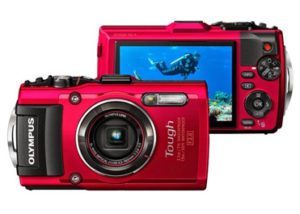
Quick view on Amazon
Available in: Australia, Canada, UK and US
If you ever get stuck in a zombie apocalypse or a nuclear bombing the TG-4 would be a safe bet. On a serious note, the Olympus Tough TG-4 is quite simply the best tough camera out there. For those of you who want to take your journeys to the next level such as underwater diving, mountain climbing or hiking and save those moments you should take this one out for a ride.
When we talk about quality we aren’t very optimistic in the first place because this one has a tiny sensor at 1/2.3”. But Olympus TG-4 is as best as it gets in that sensor size, thanks to its maximum aperture of f2.0 and the choice of great optics by Olympus. And Olympus aren’t afraid to boast the f2.0 aperture by adding aperture priority mode and a very functional macro mode which takes great images that are really close to a subject. The autofocus again, doesn’t fail to impress at its sensor size and the camera manages to get the subject in focus majority of the time.
Design wise the Olympus tough TG4 surely makes a statement that it really is robust with physical screws scrambled over the metal body as an officer wears his badges. Perhaps the best part of having a tough camera is that it is waterproof, in this case for up to 15m where your waterproof smartphone won’t venture. It means that you can take it underwater and have some fun whether you want a photograph of yourself or just want to film aquatic life. Oh and in addition to that, it is also dustproof, shock proof, crush proof and freeze proof if you are interested in that.
However, the Olympus Tough TG-4 is far from a perfect camera. The video maxes out at 1080p at 30fps which is fine at this price point unless it isn’t very appealing, and that is certainly the case here. Maybe it is about the small sensor but the video quality isn’t very sharp compared to others on this list. Secondly, as expected the low light performance is a complete bust and a high aperture could not compensate. Night shots get blurry and noisy added the fact that autofocus suffers too.
It is clearly evident that the Olympus Tough TG4 isn’t made for everyone. If you have butter fingers and drop everything or are into extreme or demanding adventures and cannot risk having to worry about expensive equipment getting damaged then this is the weapon you should wield. The TG4 won’t guarantee you superb quality but its durability will surely leave no questions unanswered.
6. Canon Powershot G9X Mark II – great midrange camera
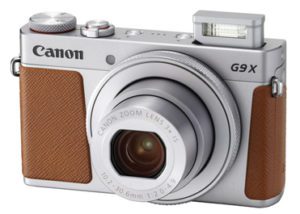
Quick view on Amazon
Available in: Australia, Canada, UK and US
Canon just recently released the Powershot G9X Mark II and it has already been a huge hit. The reason for this is quite simple; the camera offers exceptional value. For a sub-$500 range you are getting a beautiful camera that looks its part, a 1-inch sensor and a great lens. Not to mention the fact that like other high end point and shoots this camera is extremely easy to carry around.
The user interface on this one will be loved by many average consumers. It takes most of the dials and buttons out of the conventional high end point and shoot and transfers them inside the 3 inch touchscreen. The result is a very clean interface with minimal distraction. Professionals however, might not like touching around the screen to set their settings.
The design looks absolutely stunning. Canon has opted for a retro look on this one and the body is wrapped around in rubber that is pleasing to touch and enhances the grip. Protecting all of the precious internal components is a metal body for maximum protection. Furthermore, this is the smallest camera on the list today.
The images look fairly decent and come right up close to the top three contenders. To cut the price Canon had to opt for an f2.0 aperture instead of an f1.8 that is in its G7X Mark II but the quality difference is actually quite minimal. The images are saturated, vibrant and the contrast is great. The focal length is equivalent to that of 28-84mm and the stabilization is top of the line 5-axis.
The video is capped at 1080p 60fps and the camera can also shoot raw at 8.2 fps burst. Thanks to the fast and very capable DIGIC 7 Processor the camera performs equally well in low light conditions although not as good as the top three performers. The iso performance is great and the images come out rather noise and blur free.
The Canon powershot G9X Mark II is a very promising device which aims to bring the high performance of high end point and shoots to a sub-$500 mark which is a sweet spot for many buyers. Added to the fact that this camera is as small as a 1” sensor can fit in right now, this device can be really functional to lug around in your front jeans pocket without any problem.
7. Nikon 1J5 – blazingly fast
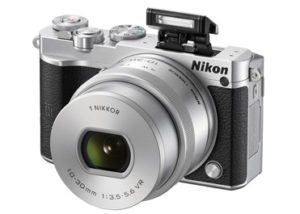
Quick view on Amazon
Available in: Australia, Canada, UK and US
The Nikon 1J5 was a difficult review for us. Although the description says Mirrorless camera, we found it more comparable to our high end point and shoots in quality due to the 1” Nikon CX sensor. The option of interchangeable lenses probably makes it worthy of the title.
Build quality is great on this one. We have a robust all aluminum body designed into a retro styled look that will surely make a few heads turn. The grip is really strong too, because of the faux leather Nikon decided to include and it will surely feels great in the hand.
But where this camera really shines is the autofocus and comes really close to the Sony contenders in this list – by far the only camera to do so. The speed is blazing fast, objects are tracked with ease and this camera has no problem handling anything we throw at it. Adding the fact that the shutter is amazingly fast and even manages to beat the Sony a6000 with a speed of 1/16000th of a second. This makes sports photography a really delightful experience on this one.
The low light performance with the kit lens is better than our expectations, if not great. For a 1″ sensor with a maximum aperture of f3.5. This can primarily be credited to Nikon’s first-hand experience in creating cameras for a long time now and for including a great processor. However it should still not be comparable to the high end point and shoots or the Sony alpha a6000.
As far as video is concerned the camera is pretty much as good at it as advertised as the subject is in focus most of the times whether you are still or moving. The 1080p mode can record in 60fps and the results are great. However, we were very disappointed by the 4K supporting a maximum of 15fps framerate. Nikon has proudly displayed 4K recording on the body of the camera but if they are taking the bragging rights they might at least give us something to work with. In majority of cases 15fps is too choppy and cannot be even remotely acceptable for this price.
We love the fact that the Nikon 1J5 is a little more compact than the Sony alpha a6000 and can still pack a punch while supporting interchangeable lenses and giving professionals better control. However it must be noted that the elite point and shoots pretty much defeat the purpose of this camera as in the same sensor size they not only manage to be smaller but also come equipped with great lenses and if we want the same performance in the 1J5 we would definitely have to spend some extra cash on those fancy lenses.
For those who want a fast, better handling camera than the sony a6000 while having the power of interchangeable lens at disposal and one that performs as good as the high end point and shoots then this is a good choice. But for those who want even more freedom then look at our next camera on the list.
8. Canon EOS Rebel SL1 – For enthusiasts
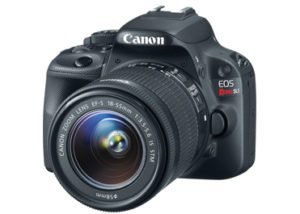
Quick view on Amazon
Available in: Australia, Canada, UK and US
For some, there are no shortcuts and nothing except a Digital SLR can make the cut. We didn’t plan on including any DSLR on this list primarily due to the fact that they are just too bulky and heavy to be carrying around traveling on long term. But this one is definitely an exception and we plan on convincing you on that.
When Canon created their EOS Rebel SL1, they emphasized lightweight design with an ‘SL’ title standing for ‘Super Lightweight.’ This innovative product is truly light when compared to other bulkier DSLRs available today. It also retains its claim as the smallest DSLR in circulation now.. Rightly so, it has been able to come very close to offering the performance to weight and size ratio offered by the mirrorrless cameras in this segment.
And the best thing about this camera is that is doesn’t in any way sacrifice performance for its size. In fact it has even more features than its elder siblings the Rebel T4 and T5i. The APS-C size sensor is great for producing images that will be unmatched in quality and right alongside the Sony alpha a6000 and it will also have an optical viewfinder which we were missing in every other camera in this list. For many, an optical viewfinder isn’t much of a deal but for enthusiasts, every inch of a detail counts and this will provide them with the satisfaction.
The autofocus also didn’t cease to impress. For reference, we are taking the Sony RX-100 V with 315 point phase detection versus our Canon Rebel SL1 with 9 point phase detection. Although the numbers don’t seem to be in favor of the SL1 but Sony RX-100 V has only about 65% of total sensor coverage compared to 80% of the sensor coverage in the SL1. It does mean that the RX-100 will still be a lot faster but it doesn’t mean it is more practical for professionals.
The textured hand grip fits comfortably into even the sweatiest palms and provides a secure grip. Canon has successfully packed a full DSLR punch into a much smaller, lighter and secure package. But we must remember that even for the great camera the SL1 is, travelers might not find this camera pocketable at all especially with the long kit lens. The quality comes at a cost of lugging around an extra carrying case of bag for this one and for many it is already a too heavy price to pay.
Unmistakably the Canon EOS Rebel SL1 is a beast when it comes to capturing images but the video recording maxes out at 1080p resolution. The video that you take however will be much better than any smaller cameras we are comparing the SL1 with which has primarily to do with the large sensor on this one.
The SL1 remarkably provides all the benefits of a DSLR at a fraction of size and weight and we are impressed by it. The autofocus is on point, the color and dynamic range are good and images just look great. However when the compact body is paired with an often bigger lens space savings get a little less decent. We recommend pairing this camera with the Canon 40mm f2.8 pancake lens which is not only cheap but also really compact. If you are okay with carrying a bigger camera that won’t fit in your pocket then look nowhere else than the Canon EOS Rebel SL1.
9. Nikon Coolpix L840 – nature photography.
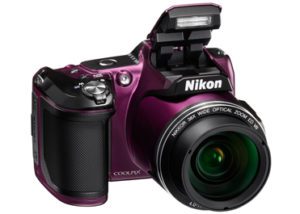
Quick view on Amazon
Available in: Australia, Canada, UK and US
The Nikon Coolpix brand isn’t known for its quality cameras – that is quite well understood. But the superzoom cameras Nikon has started to roll out recently have been quite a big step for this brand. The focal length on this Coolpix L840 is equivalent to a very impressive 22.5-855mm. This could mean that people like nature photographers might finally have a solution to the biggest problem they have to face, which is carrying around an oversized telephoto lens which can be many times bigger than the camera itself in some cases.
When there is adequate light, the camera doesn’t fail to deliver. The optical zoom being offered here is crazy huge. Subjects very far away can easily be filmed or shot with minimum quality loss theoretically. Although the autofocus is very disappointing but when it does take subjects into focus it produces quite crisp and detailed images. The 20 megapixels images look great once they come out of the camera and the large zoom lens can be used to play around creatively for a lot of exciting things.
The body of the camera is really big for its quality and some people might mistake this for a miniature DSLR. It is made out of cheap plastic all over but the rubber grip is outstanding. The deep depression between the soft, textured grip and the lens is absolutely great for holding onto the camera. The controls and dials are kept to the minimum with a really simple user interface. The purpose is to be in auto mode and only a click away from your shot, no questions asked.
Perhaps the most unsettling thing about the camera also is the lack of control it provides to the user. Even to the most basic consumers would agree that some elements of the camera are better taken care of manually. Unfortunately anything except setting the ISO and white balance are completely denied to the user.
You can hardly get any decent shot at night with this one. Most of the shots are too blurry even to register as normal images. The iso performance starts to get very bad after 1600 and the shutter speed (which apparently cannot be manually set) often tries to compensate for this but in turn completely renders the shot shot blurry and useless.
So this camera is the worst performing in the list, which is quite evident from the last few paragraphs then why did it make it into the list? The reason is quite simply because it solves a really big problem and provides great value at a very low price of sub $250. The lens here can do wonders if used correctly and if you search the web you might be astounded by some of the natural images this device has been able to capture fully zoomed in. However we will not recommend this camera for any other purpose.
10. Sony DSC-W830 – The cheapest camera
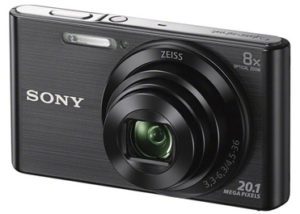
Quick view on Amazon
Available in: Australia, Canada, UK and US
For travelers on a very tight budget, here is a camera that will outperform your average smartphone without breaking the bank. The Sony DSC-W830 is the best at what it does. At a ridiculous price of sub – $150 you will get a really functional camera that you can very easily fit in your pocket.
At this price it would be unfair to expect anything decent from a camera nowadays. But when there is plenty of light the Sony DSC-W830 can really handle pictures really well. Among others in this range it will produce vibrant and beautiful images. The sharpness takes a hit surely, but nothing that could break the deal.
At the video side of things this camera can record up to 720p resolution at 30fps. The video quality was adequate and the focus coped up well. The image stabilization wasn’t perfect but we can’t complain.
The edges are not rounded like on the RX-100 but the design language is sleek and stylish. This one is the most compact camera in this list which is why it fits perfectly for traveling purpose.
In low light however we must not get our hopes high. Let’s face it – digital cameras have never been really good at night photography and this one is not an exception. The images turn out to be blurry ad the iso performance is not great. But Sony did not do a lousy job and the images are much better than the Nikon Coolpix D840. A bit noisy images are still acceptable than completely useless images and this camera might give you better results than your smartphone depending on the scenario.
Having an 8x Optical zoom gives the W830 good advantage in many scenarios. While the 24mm focal length will make sure your beautiful landscapes are captured extensively, the 200mm focal length gives you the power to zoom in for those natural shots without worrying about a loss in quality. This equates to a much freedom than others in this price range.
There or no knobs or dials, just simple buttons only. The amount of buttons are also kept very limited next to the 2.7 inch screen. Overall this equates to a very clean and material design.
The Sony DSC-W830 is not going to win any awards for its performance but it surely deserves a place in our Top Ten Travel Cameras of 2025 list because it provides exceptional value for the price and the compact design makes for an easy to carry experience. If you are in for a decent camera and are on a really tight budget then don’t hesitate to pick this one up.
In the world of travel cameras there is no option that can fit everyone, it all depends on your priorities and through this review we have tried to list down most of the potential candidates. In the end the choice comes down to what fits you the best so weight your choices and select the camera you feel might just be right for you.
